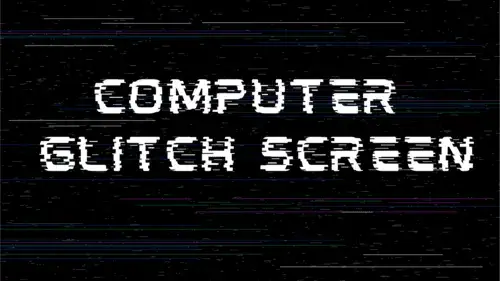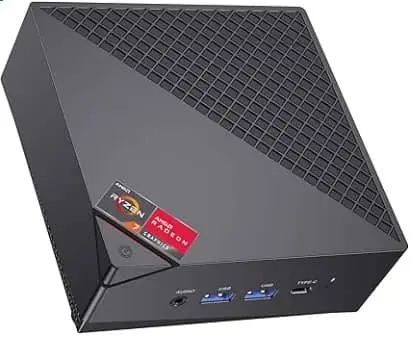
Updating driver, repairing windows setup, resetting screen settings, and loose ports can cause computer glitch screen, after doing all that checks your computer screen will be fixed more over adjusting a refresh rate can also be helpful for the computer glitch screen to be fixed.
Table of Contents
Computer Glitch Screen causes and its Solution:
Computer glitch screen may be cause by incorrect settings, human error, old and outdated window, corrupt window, broken or damage computer screen now we will look at the causes and its solutions in details simultaneously.
Outdated or Corrupt Display Driver:
Cause: Display driver is outdated and need attention to be update which can resolve computer glitch screen error, so follow the below steps:
- Click on the “Start Button” and select “Settings.”
- In the settings window, click on “Update & Security,” then choose “Recovery” in the left pane.
- Navigate to “Advanced Startup” and select “Restart Now.”
- Click on “Troubleshoot” and then choose “Advanced Options.”
- Go to Startup Settings and click on “Restart.”
- Once the computer restarts, choose “Enable Safe Mode with Networking” to access the internet for driver updates.
- In Safe Mode, right-click the “Start” menu and select “Device Manager.”
- Expand the “Display Adapters” option and right-click on the listed adapter. Select “Uninstall Device.”
- Choose the option to “Delete the driver software for this device” and select “Uninstall.”
- Restart the computer.
- Go to Settings > Update & Security > Windows Update > Check for Updates.
Repairing windows setup
Cause: Sometime window are corrupts and cause different functions and hardware not to work properly and computer screen goes off and change its color so you follow this steps and try to repair your screen which can resolve computer glitch screen error:
- Use Startup Repair:
- Restart your computer.
- When the Windows logo appears, press and hold the power button until the computer shuts down.
- Repeat this process twice more to start Automatic Repair.
- Select “Advanced options” > “Troubleshoot” > “Advanced options” > “Startup Repair.”
- Use System File Checker (SFC):
- Open Command Prompt as an administrator.
- Type:
sfc /scannowand press Enter. - Wait for the scan to complete. This will check and repair corrupted system files.
- Use DISM (Deployment Image Servicing and Management):
- Open Command Prompt as an administrator.
- Type:
DISM /Online /Cleanup-Image /RestoreHealthand press Enter. - Wait for the process to complete. This will repair the Windows image.
- Perform a System Restore:
- Go to “Settings” > “Update & Security” > “Recovery.”
- Under “Advanced startup,” click “Restart now.”
- Choose “Troubleshoot” > “Advanced options” > “System Restore” and follow the prompts to restore your system to a previous restore point.
- Reset your PC:
- Go to “Settings” > “Update & Security” > “Recovery.”
- Under “Reset this PC,” click “Get started” and follow the prompts to reset your PC. You can choose to keep your files or remove everything.
- Perform a Clean Install of Windows 10:
- Download the Windows 10 installation media from Microsoft’s website.
- Boot from the installation media.
- Follow the prompts to install Windows 10, selecting “Custom: Install Windows only (advanced)” when prompted, and formatting your hard drive.
- Always make sure to back up your important files before attempting any repairs or reinstallations. If you’re unsure which method to use or encounter difficulties, seeking assistance from a professional or Microsoft support can be helpful.

Resetting Screen Settings
You can reset screen settings which can resolve computer glitch screen error so follow the steps and get out of this error:
- Open Settings:
- Click on the “Start” menu, then click on the gear icon (⚙️) to open the “Settings” app.
- Access Display Settings:
- In the “Settings” app, click on “System.”
- Navigate to Display Settings:
- In the left sidebar, select “Display.”
- Reset Display Settings:
- Scroll down to find the “Advanced display settings” link and click on it.
- In the “Advanced display settings” window, scroll down and click on “Display adapter properties for Display 1” (or whichever display you want to reset).
- In the properties window, navigate to the “Driver” tab.
- Click on the “Roll Back Driver” button if it’s available. This will revert your display driver to the previously installed version.
- If the “Roll Back Driver” button is grayed out or not available, you can try uninstalling the display driver by clicking on the “Uninstall Device” button. Follow the prompts to uninstall the driver.
- After uninstalling the driver, restart your computer. Windows will automatically reinstall the default display driver.
- Once the default display driver is installed, your screen settings should be reset to their defaults.
Please note that resetting display settings as described here will revert any customizations or changes you’ve made to your display settings, including resolution, refresh rate, color calibration, and multiple display configurations.
Loose ports
Cause: loose ports can also computer glitch screen and most of the time repair guy only tighten the ports and charge you a lot so you can also check it by following this steps:
- Power Off and Unplug:
- Shut down your computer completely and unplug it from the power source to ensure safety.
- Open the Case:
- Depending on your computer’s design, you may need to remove screws or release latches to open the case. Refer to your computer’s manual for specific instructions.
- Ground Yourself:
- Before touching any internal components, ground yourself by touching a metal part of the computer case to discharge any static electricity buildup.
- Check Graphics Card:
- Locate the graphics card, typically installed in a PCIe slot on the motherboard.
- Ensure the graphics card is securely seated in its slot by gently pressing down on it. It should not move or wiggle.
- Inspect Cables:
- Check all cables connected to the graphics card, especially the PCIe power connectors.
- Ensure the cables are firmly attached to both the graphics card and the power supply unit (PSU).
- Check Other Components:
- While inside the case, inspect other components such as RAM modules, CPU cooler, and expansion cards to ensure they are securely installed and not loose.
- Inspect Monitor Cables:
- Follow the video cable (HDMI, DisplayPort, VGA, etc.) from the graphics card to the monitor.
- Ensure the cable connections at both ends are secure. If using adapters, check those connections as well.
- Test with Different Cable:
- If possible, try using a different video cable to connect your computer to the monitor to rule out cable issues.
- Inspect the Monitor:
- Check the monitor’s stand and casing for any loose screws or parts.
- If the monitor has adjustable features (e.g., height, tilt), ensure they are securely locked in place.
- Close the Case and Power On:
- After confirming that all components are securely connected, close the computer case and plug it back into the power source.
- Power on your computer and monitor to see if the display issues have been resolved.
If you want to buy a new computer screen so you can buy from our amazon associate link and help us to donate more to educate more girls and children in the rural areas, buy from link with in one day after clicking the link.
You can also save your relatives and friends from scammers by reviewing the list and articles of laptop from our website.




Leave a Reply
You must be logged in to post a comment.